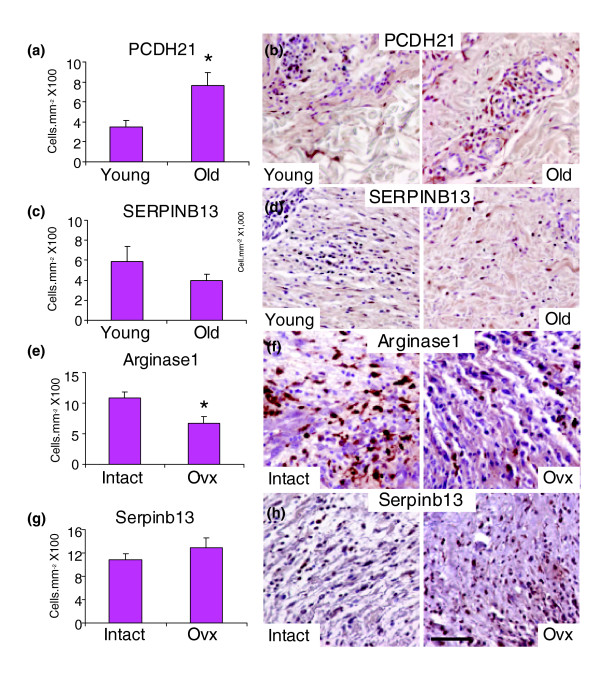Figure 7.
Immunohistochemical analysis of proteins encoded by array-identified dermally expressed genes during human and murine wound healing. (a-d) In agreement with array findings, human wound granulation tissue protein levels of Protocadherin 21 (a) and SERPINB13 protein (b) mirrors changes in gene expression. (e,f) In mice, the number of granulation tissue cells expressing arginase 1 is reduced in wounds from ovx mice, mirroring the human array findings and validating this gene/protein as estrogen regulated. (g,h) In contrast, yet also in agreement with human array findings, the number of granulation tissue cells expressing serpinb13 was not significantly altered between intact and ovx mice, that is, not dependent on estrogen levels. Results are presented as mean ± standard error of the mean; *p < 0.05. The scale bar in (h) represents 45 μm (b,d), 20 μm (f) and 35 μm (h); n = 3-6 per group.

